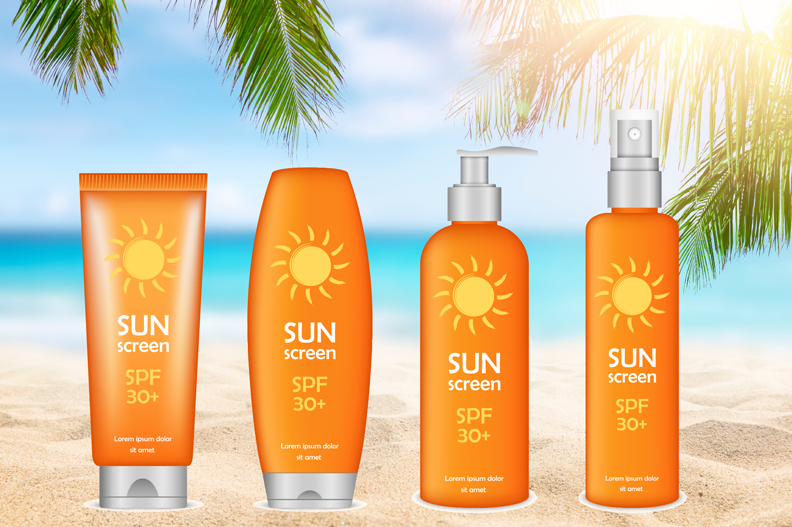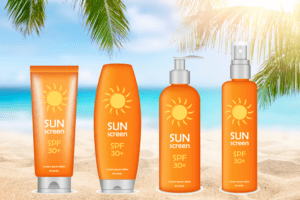Ah, Summer. The season of cook-outs, pool play, beach trips, and baseball is now in full swing. If we’re not spending a large part of this month outside, are we even doing it right? Fun in the sun is great for our mental health and physical activity, but there is one downside: the exposure to harmful UVA and UVB rays from the sun. Too much sun can cause short-term discomfort and long-term complications that are both frustrating (wrinkles and sun spots) and dangerous (skin cancer). Sunscreen is the best way to enjoy outdoor activities while protecting our skin from the sun’s harmful rays. With so many products on the market, it can be confusing to select the perfect sun protection for you. Read on for 5 important facts about sunscreen!
- Higher SPF = more protection. SPF stands for Sun Protection Factor, and it measures how much solar energy is required to cause a sunburn when you’re wearing sunscreen compared to unprotected skin. SPF 30 prevents 97% of UVB rays from reaching your skin, while SPF 50 blocks 98%. While different SPF amounts offer different amounts of coverage, it’s important to note that all types of SPF need to be reapplied regularly during sun exposure.
- Most people don’t apply enough. It’s not enough to rub in sunscreen just once during a day of fun in the sun. Experts say a person in a bathing suit needs to apply a full ounce of sunscreen to cover all exposed areas, including the face, every 2 hours. If you’re planning to spend 8 hours at the beach, be sure to pack a 4oz bottle of SPF per person! Even if we’re not spending a day outdoors, sunscreen should be part of our daily ritual. Driving, checking the mail, and various activities all add up to daily sun exposure. Health experts recommend habitually applying sunscreen as part of a morning routine. Many sunscreens are formulated for the whole body, but beauty companies have come a long way in offering face sunscreens that do not leave a white cast, are lightweight, and not greasy.
- Spray is fine, but lotion is better. It can be painful to make kids stand still long enough to apply enough sunscreen and fully rub it in. So, sunscreen sprays seem to provide a helpful solution to that dilemma. If all you have on-hand is spray, it’s of course better than nothing. But experts recommend classic lotion sunscreen. It’s able to cover more area for longer, and is more successful at blocking harmful rays from the sun.
- Look for “Broad Spectrum” on the label. The sun emits different types of light rays, Ultraviolet A (UVA) and Ultraviolet B (UVB). UVB rays are shorter and cannot penetrate glass, but they are responsible for most sunburns. UVA rays are more sneaky- they can penetrate glass and have an impact on your skin beneath the surface, where you can’t even feel the burn. Sunscreens with a “broad spectrum” label are created to block both UVA and UVB rays.
- Remember the power of clothing. Don’t just pack sunscreen for your day of fun in the sun…pack lightweight, breathable, long-sleeved layers as well as hats and sunglasses. Seek refuge in shade between dips in the water, and remind yourself that every little bit of coverage helps. Opt for a swim cover-up that is long-sleeved and cool for extra help. Companies like www.swimzip.com offer a wide variety of SPF-infused and high-fashion options for kids and adults alike!
The last thing we want to do is avoid outdoor fun, so let’s work hard to make it safe and enjoyable for the entire family! Let’s go into the height of summer prepared and knowledgeable about the UVA and UVB rays, so we block them effectively.


